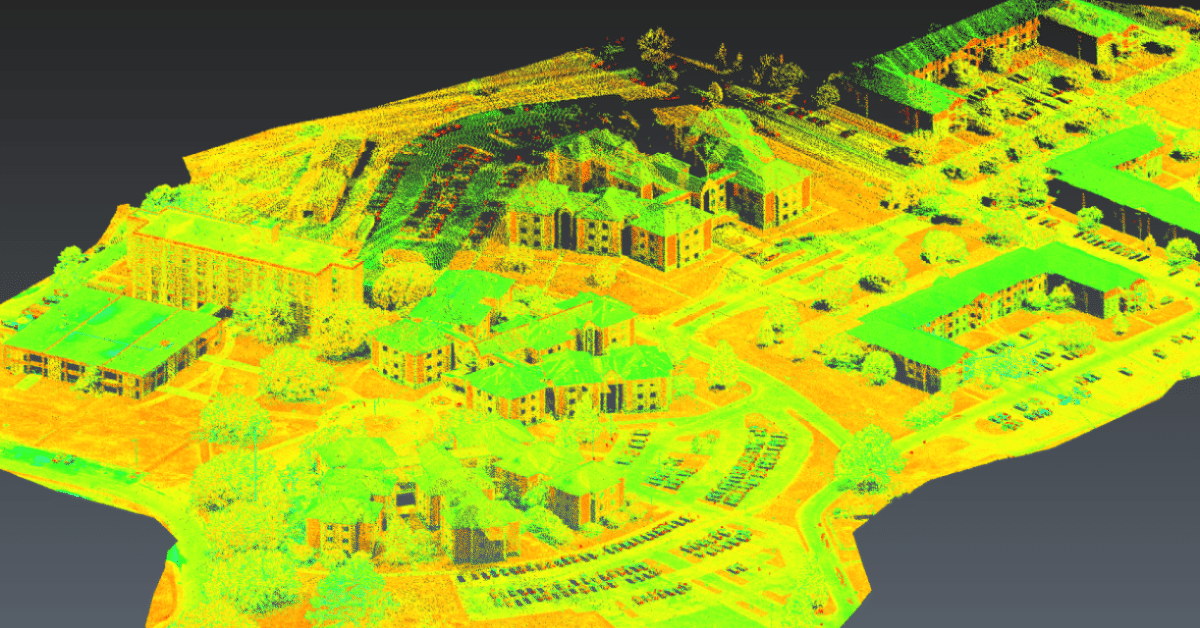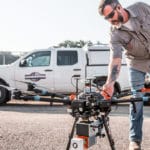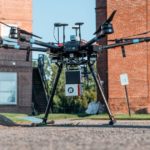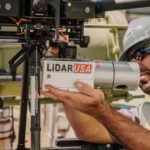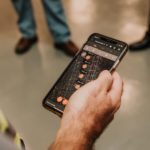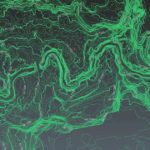LiDAR and radar are the two most powerful remote sensing technologies that help in tracking, detecting, and imaging objects!
Both the devices have the same function – to detect the volume and presence of distant objects. Because of this reason, people often get confused between the two and use them interchangeably.
The main differences between LiDAR and radar is their wavelength, and the medium they use to detect objects. The wavelength of airborne LiDAR is between 1000 – 1600 nm, and ground-based LiDAR is 500 – 600 nm., while the wavelength of radar is between 30 cm and 3 mm.
LiDAR uses laser or LED light to scan and detect distant objects, while radar uses radio waves. Both technologies work on the same principle but use different sources.
To learn more about the differences between LiDAR and radar, read on.
Is LiDAR the Same As Radar?
LiDAR is not the same as radar. LiDAR stands for light detection and ranging, while radar stands for radio detection and ranging. Both radar and LIDAR use specialized mediums to measure distance, but they are not the same.
In a LiDAR device, the laser pulses are sent out in all directions and reflect off objects. As these light pulses hit an object, they reflect back to the receiver, which determines the object’s size, shape, and distance. In a radar device, radio waves are sent out using fixed or rotating antennas instead of a laser. Both of these technologies are used in a variety of applications, from mapping to surveillance.
Light detection and ranging (LiDAR) was first developed several decades after radar. While LiDAR devices come with a transmitter and receiver, radar devices come with antennas for transmission and reception.
The objects which are measured by LiDAR and radar devices differ in size, shape, and nature due to different wavelengths. As LiDAR has a micrometer range, i.e., 500 – 1600 mm, it can easily detect and map smaller objects. As for radar devices, the wavelength is longer, i.e., 30 cm and 3 mm. Because of this, radar has limitations on target size.
Is LiDAR or Radar Better?
LiDAR vs radar, the big question! While LiDAR can offer better accuracy, speed, and detailed information, radar is more reliable and cost-effective. Both the technologies have their advantages and disadvantages, so when questioning the use of LiDAR or radar, neither one is better than the other.
-
Is LiDAR or Radar More Accurate?
When it comes to accuracy, LiDAR is a better choice, as the results can be more accurate and detailed because of its micro wavelengths. It offers precision mapping with a higher resolution which is essential when it comes to 3D modeling.
However, radar is often a better option when it comes to detecting larger objects that are in motion. But if you want to develop 3D models of objects with finer details, then LiDAR is the ideal choice.
-
Is LiDAR or Radar Cheaper?
Radar systems are cheaper compared to LiDAR, which can be an expensive technology. Radar systems for vehicles can be found for as low as a few hundred dollars. On the other hand, a high-end automotive LiDAR system can cost anywhere around $75,000.
However, especially in recent years, LiDAR systems have become more affordable. A solid-state LiDAR system with no moving part is now available for $100. This is the main reason autonomous vehicles are more expensive. While top companies like Waymo, Toyota, and Uber use LiDAR systems, Tesla continues to support radar for self-driving cars.
-
Is LiDAR or Radar More Reliable?
When it comes to reliability, radar is the best choice. LiDAR uses light waves for mapping, which can be hindered by a change in the atmosphere. For example, moisture affects the performance of LiDAR systems. During bad weather conditions like snowstorms, rain, or fog, LiDAR doesn’t work well. On the other hand, radar systems aren’t affected quite as much by bad weather, which means they could be more reliable to use on most days.
-
Does LiDAR or Radar Have a Longer Range?
LiDAR has a smaller wavelength and can better detect smaller objects. But radar’s longer wavelength gives the system enough power to detect objects at a longer distance. In some cases, radar can even detect objects up to a mile away.
Here are some uses LiDAR is best for:
- Surveying
- Architecture
- Construction or industrial site inspections
- Archaeology
- Forest planning
- Agriculture
- Transport planning
- Oil and gas exploration
- Flood Modeling
Here are some uses radar is best for:
- Air traffic control
- Aircraft anti-collision systems
- Astronomy
- Measuring vehicle speeds
- Tracking and detecting ships at sea
- Weather observation
Why Is LiDAR Faster Than Radar?
Compared to radar, LiDAR uses a lower wavelength which helps to detect small objects with accuracy. The wavelength of LiDAR is lower compared to that of radar, making it more effective for detecting small objects. Because of these shorter wavelengths, LiDAR is faster than radar systems.
LiDAR also uses laser light to detect objects, while radar uses sound waves. The speed of light is faster than the speed of sound, so LiDAR systems receive and transmit signals faster than the sound waves used by radar. This is another main reason why LiDAR is faster than radar.
Do Police Use Radar or LiDAR?
Police use both LiDAR and radar. Each of these technologies are used in speed measuring devices used by police officers. They are both useful in determining the speed of moving vehicles around them, in their own ways.
LiDAR speed measuring devices are popular with police forces all over the world. They work by using pulsed infrared laser light to measure a vehicle’s speed. These devices can measure the speed of a moving vehicle and are extremely accurate. LiDAR systems are perfect when offices are working in a team as it is a two-man operation.
Due to the nature of LiDAR, officers cannot use their laser guns when they are inside a moving car. This is why when you pass a police officer a little bit too fast who is also driving, they may not pull you over.
This is why you will most often see police officers parked on the side of the road, with their LiDAR or radar guns pointed. This allows them to get a more accurate reading. Some LiDAR models are even designed to take license plate images at the same time as they detect excessive speeding.
As for radar systems, they are often mounted to the car, which allows for police to be constantly scanning for vehicle speeds. There are antennas mounted on the front and rear of the police vehicle, which they can use while they’re driving their cars. That way they don’t need to be stationary to detect the speed.
With radar, police officers can detect vehicle speeds even with windows rolled up. LiDAR cannot be used when the windows are up. If there is only one officer, then radar is usually the best option to track speeding cars.
How Do Police Use LiDAR?
Police use LiDAR guns that help them to determine the speed that vehicles are driving at. These laser guns emit a short burst of infrared laser light towards a car, which is reflected back to the gun. The gun has a sensor that analyzes the laser beam to generate a report which allows them to know how fast the vehicle is moving.
The lasers emit pulses that are reflected off of the car and return to the police officer. These police devices use a laser beam to measure time versus distance and make mathematical calculations to determine the speed.
This technology allows them to determine speeds, and write speeding tickets based on the data collected from these measurements. Officers are trained to target vehicles from 800 to 1,200 feet away.
Can 4D Radar Replace LiDAR?
The 4D imaging radar is a form of technology that enables accurate measurements of objects. It records and analyzes a space and can detect objects with a high degree of precision. A 4D radar is an imaging radar that integrates the fourth dimension of measurement into a 3D imaging system.
It can be mounted on a drone, UAV, or satellite, and can record spatial data of a place. It can also be used for other defense-related applications, and it can even be used to map land for various purposes and disaster preparedness.
Four-dimensional radar is more accurate and powerful than traditional radar, LiDAR, and cameras. It uses a “Multiple Input Multiple Output” (MIMO) antenna.
With this new technology, one can determine the size, direction, location, speed, and elevation of objects in the environment. It can work in any weather and level of light to even detect targets behind objects. With its increased speed, accuracy, and precision, 4D radar could one day replace LiDAR systems.
Do Radar Detectors Pick up LiDAR?
Radar detectors don’t pick up LiDAR signals as each of these technologies work on different mediums. While radar uses sound waves, LiDAR uses laser light to detect objects.
Radar systems are designed to emit and capture radio waves. They have antennas that work as a transmitter as well as receivers. They are unable to detect laser signals. To capture laser signals, special sensors are used in LiDAR systems.
Can LiDAR Be Wrong or Inaccurate?
While LiDAR guns are extremely accurate, they can sometimes provide wrong or inaccurate results. These guns can offer accuracy within one mile per hour up to 60 miles per hour.
However, if you aim incorrectly or if the system is in motion, the results can be inaccurate. The accuracy of a LiDAR measurement is determined by several factors. The accuracy of the system will depend on the angle at which you point the gun towards the car, whether or not the surface is reflective or non-reflective surface, and whether or not the LiDAR system is in motion.
This is why you need to remain stationary, clean off the device, and properly calibrate the device to avoid inaccurate results. Skipping out on any of these steps could result in a less accurate reading.
